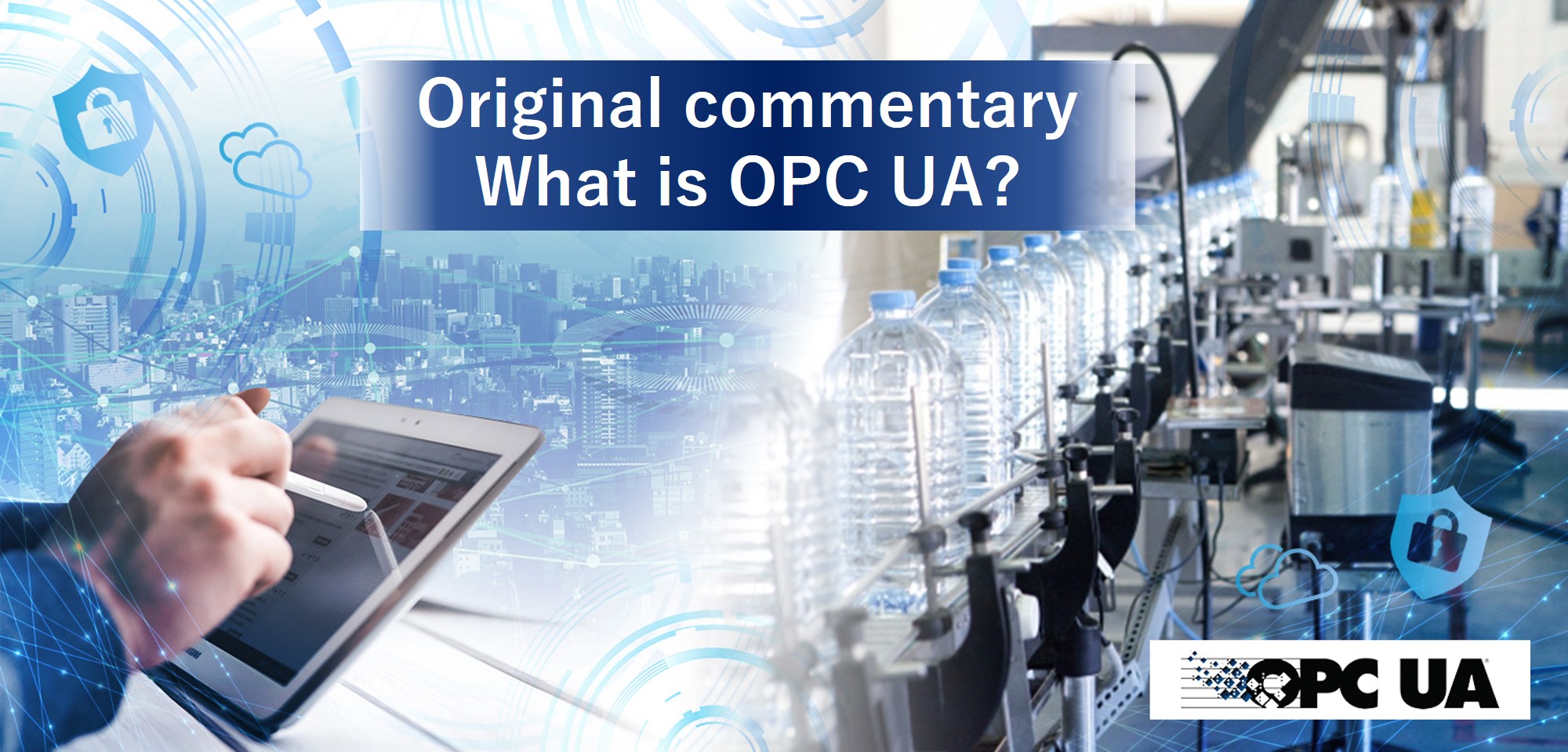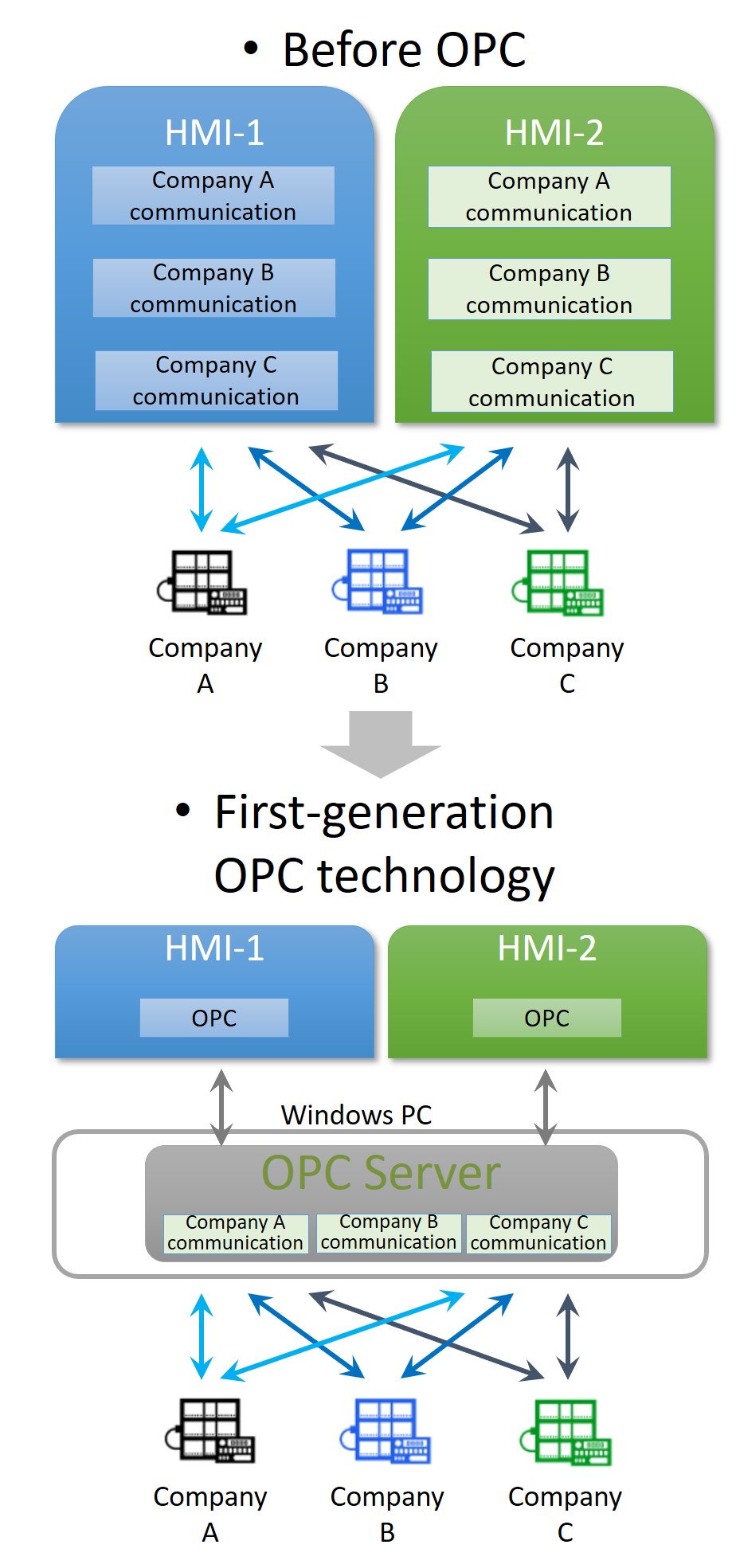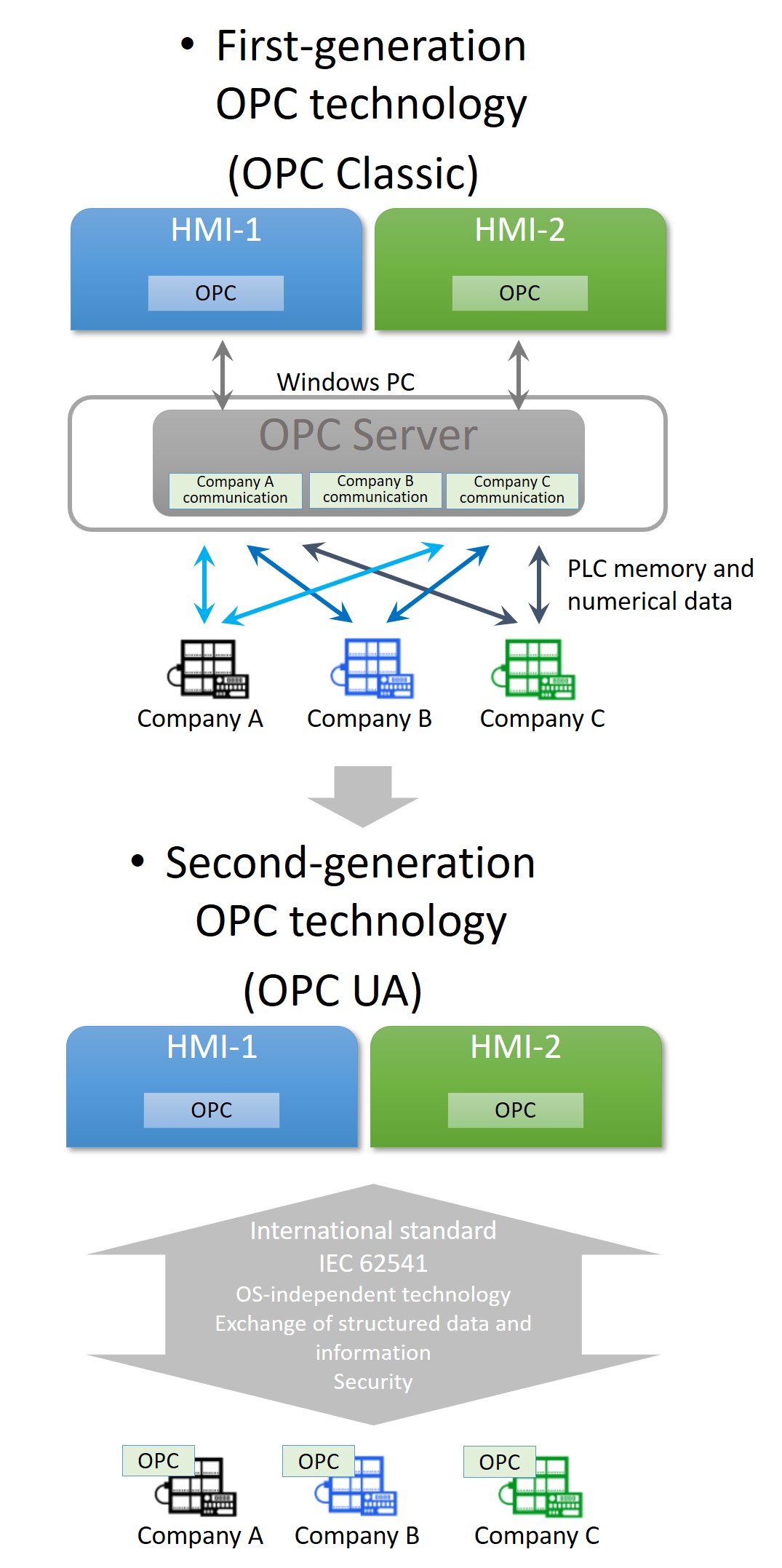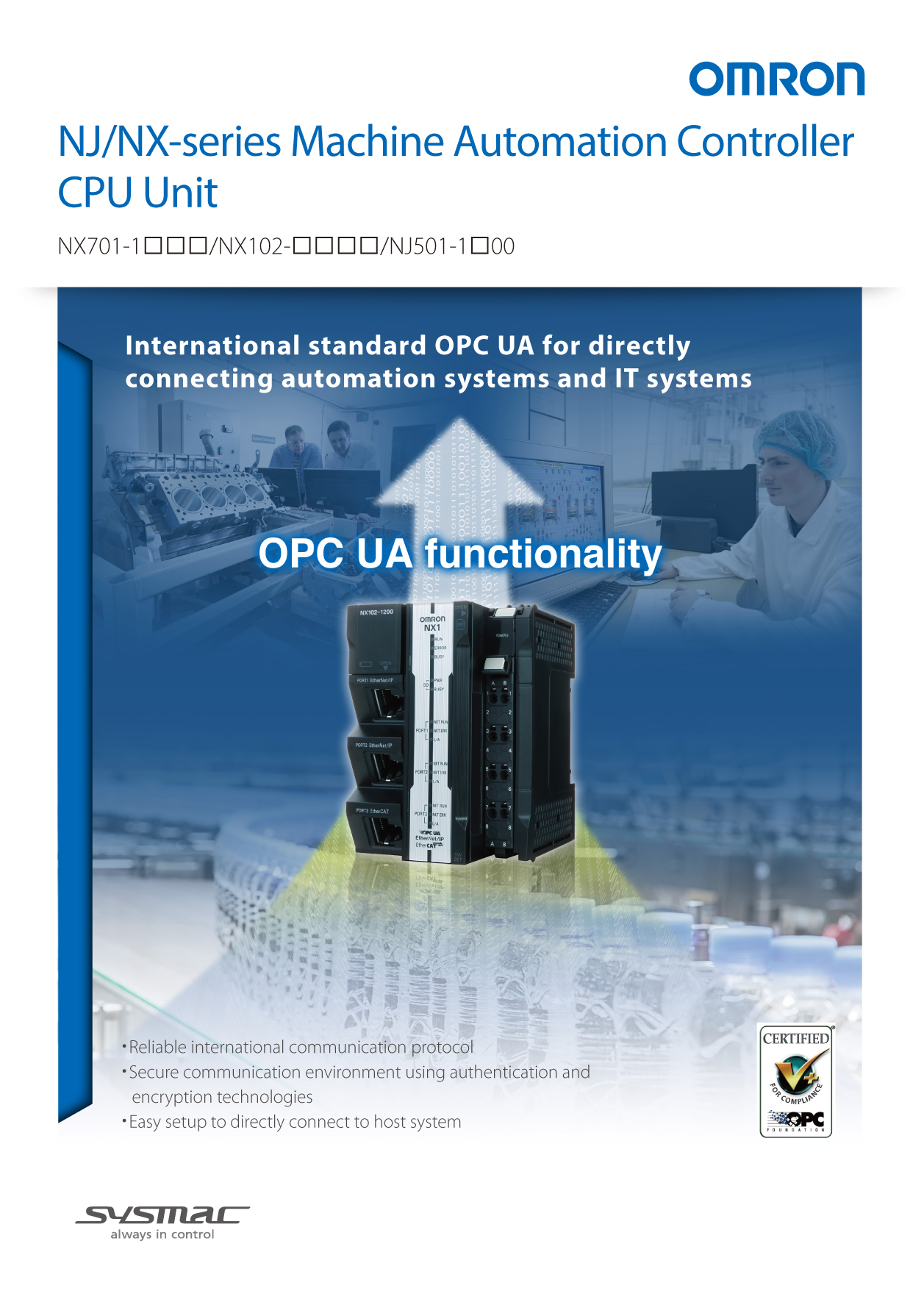

1. Outline of OPC UA
"The Industrial Interoperability Standard"
OPC Unified Architecture (OPC UA) is an interoperability standard for the secure and reliable exchange of data in the industrial automation space and in other industries. This standard was released by the OPC Foundation in 2008 and later adopted as IEC 62541.

Due to hardware, operating system and vendor independence as well as secure and reliable data exchange, OPC UA is listed as a recommendation for the communication technology in Industrie 4.0*, which triggered interest all over the world.
In addition, this standard is integrated with the IEC 61131-3 PLC programming standard to reliably exchange field data between machines and IT systems like SCADA or MES, serving as a basis for the packaging standard PackML (ANSI/ISA-TR88) for food and household goods industries and the standard for exchange of data between injection molding machines (EUROMAP 77).
Since the adoption of this open standard is increasing in various industries, Omron has implemented OPC UA functionality as a standard feature of its NX701-1□□□/NX102-□□□□/NJ501-1□00 Machine Automation Controller. Omron is contributing to the diffusion of the industrial IoT standard as a bridge between FA and IT.
* Described in RAMI (Reference Architecture Model Industrie 4.0).
History of OPC - From OPC Classic to OPC UA
OPC UA, which has rapidly spread in recent years, is the second generation of the OPC technology. The first-generation OPC technology was published in 1996.
At the time, OPC was defined as “OLE for Process Control”. Based on the technology developed by Microsoft for Windows, this technology enables data communication between the production system and automation devices from other vendors via a Windows PC. This OPC DA (Data Access) standard has enjoyed widespread adoption, promoting installation of PCs and use of IT in factories.
Omron joined the OPC Foundation Japan just after the release of the OPC technology, and has been contributing to the distribution of the OPC technology as its member.


Since then, new demands for OPC have emerged from the evolution of IT technologies and the further rising need for use of IT at factories.
- Operate from not only Windows PCs but also a variety of automation devices.
- Exchange structured data and semantic information as well as simple numerical and memory data.
- Enhance security as well.
The second-generation OPC technology that meets these new demands is OPC UA .


The first-generation OPC technology came to be called OPC Classic after OPC UA was published. The definition of OPC has changed from “OLE for Process Control” to “Open Platform Communications”.
The OPC Foundation’s tag line that conveys values has also changed to “The Industrial Interoperability Standard”, clarifying its aim to create international standards for interoperability in industrial automation.
This white paper series consists of six articles, introducing features, examples, and trends of OPC UA.
- 1. Outline of OPC UA "The Industrial Interoperability Standard” (this article)
- 2. Features of OPC UA “Connected, Communicated, Secured”
- 3. Activities of OPC UA (1) Collaboration
- 4. Activities of OPC UA (2) Compliance
- 5. OPC UA Products and Case Studies
- 6. Update on OPC UA
- 7. The proliferation and evolution of OPC UA
- 8. Case Study (Winder with OPC UA)
- 9. A New Initiative for OPC UA
* Described in RAMI (Reference Architecture Model Industrie 4.0).
[Reference]
The OPC Foundation website https://opcfoundation.org/
[Reference]
The OPC Foundation website https://opcfoundation.org/

Download our product catalog
for more information!
for more information!
Machine Automation Controller
NJ/NX-series CPU Unit
NX701-1□□□/NX102-□□□□/NJ501-1□00
Photographs are for illustration purposes only and do not represent actual applications.
The system configurations in this page are for reference purposes only.
Sysmac is a trademark or registered trademark of OMRON Corporation in Japan and other countries for OMRON factory automation products.
EtherCAT® is a registered trademark and patented technology, licensed by Beckhoff Automation GmbH, Germany.
Safety over EtherCAT®is a registered trademark and patented technology, licensed by Beckhoff Automation GmbH, Germany.
EtherNet/IP™, CIP Safety™, CompoNet™, and DeviceNet™ are trademarks of ODVA.
OPC and OPC UA are trademarks of the OPC Foundation.
Other company names and product names in this page are the trademarks or registered trademarks of their respective companies.
Microsoft product screen shot(s) reprinted with permission from Microsoft Corporation.
The product photographs and figures that are used in this page may vary somewhat from the actual products.
The system configurations in this page are for reference purposes only.
Sysmac is a trademark or registered trademark of OMRON Corporation in Japan and other countries for OMRON factory automation products.
EtherCAT® is a registered trademark and patented technology, licensed by Beckhoff Automation GmbH, Germany.
Safety over EtherCAT®is a registered trademark and patented technology, licensed by Beckhoff Automation GmbH, Germany.
EtherNet/IP™, CIP Safety™, CompoNet™, and DeviceNet™ are trademarks of ODVA.
OPC and OPC UA are trademarks of the OPC Foundation.
Other company names and product names in this page are the trademarks or registered trademarks of their respective companies.
Microsoft product screen shot(s) reprinted with permission from Microsoft Corporation.
The product photographs and figures that are used in this page may vary somewhat from the actual products.